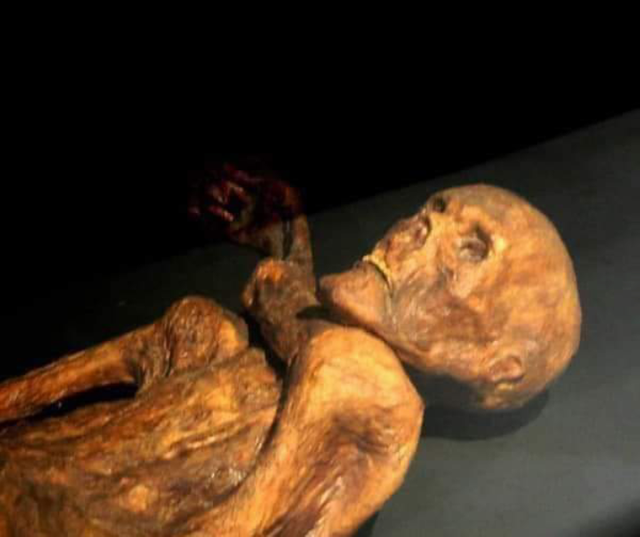
On September 19, 1991, two German tourists, Helmut and Erika Simon, were traveling at an altitude of 3,210 feet near the border of Austria and Italy when they spotted a corpse. Initially, they thought it was the body of someone who had recently died from an illness, as it was covered in ice. Later, on September 22, the body was sent to the medical examiner at Innsbruck University. After various tests, it was revealed to be the body of a man who had lived at least 3,000 to 4,000 years BCE. The man, named "Otzi the Iceman," stood about five and a half feet tall and had been preserved for thousands of years in ice.
Both Italy and Austria claimed ownership of Otzi, but measurements indicated that he was found within Italy's borders.
Otzi, about five and a half feet tall, weighed 61 kilograms when alive. When his body was discovered, his weight had reduced to 13.75 kilograms due to thousands of years spent in ice. DNA analysis suggested that Otzi spent his childhood in a village called Feldthurns, north of the city of Bolzano, and later moved to a valley 50 kilometers further north, where he spent the rest of his life.
From the food found in his stomach, it was inferred that Otzi died in late spring or early winter. Experts concluded that the arrow embedded in his left shoulder, causing significant blood loss, was the cause of his death. He had an axe and two arrows at the time of his death. The 1.82-meter-long axe was made of 70% copper. DNA tests confirmed that Otzi was a resident of Southern Europe, isolated from the rest of the world during that era. Scientists revealed that red blood cells found in Otzi's body were still in their original state. It was also discovered that he might have been trying to carry an injured companion when he was wounded.
Otzi's last meal consisted of ibex meat, red deer meat, fat, wheat, and some herbs or plants. The food he consumed was initially dried, suggesting that the meat he ate had been preserved by drying.
Otzi's mummified body is exhibited at the South Tyrol Museum of Archaeology in Bolzano, Italy.